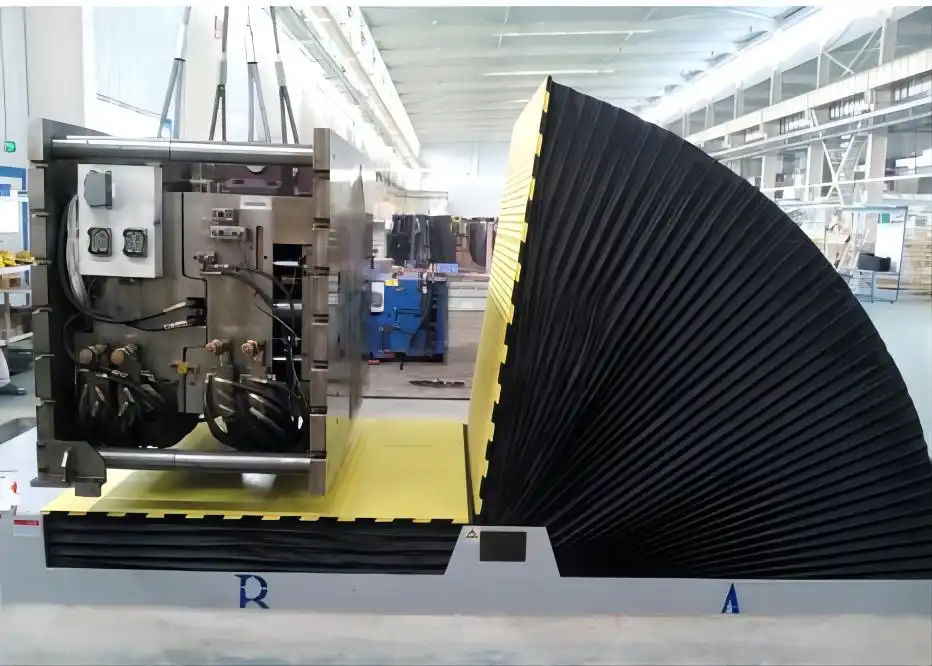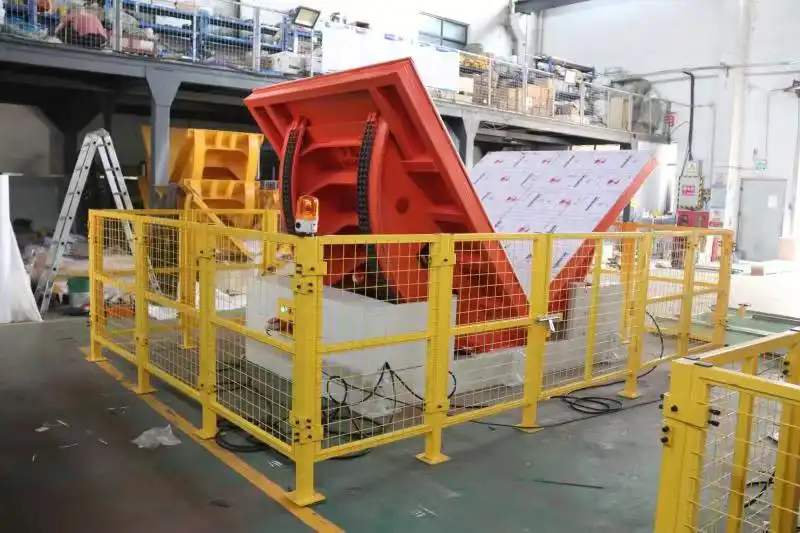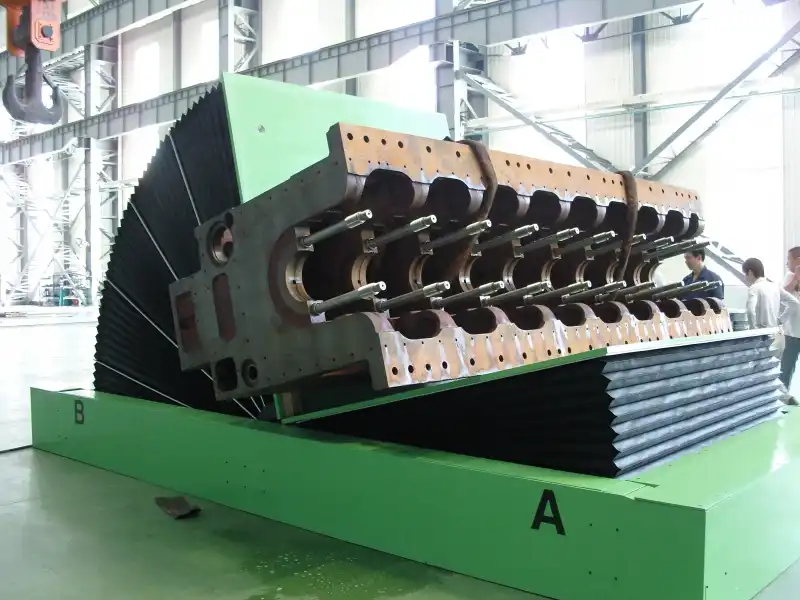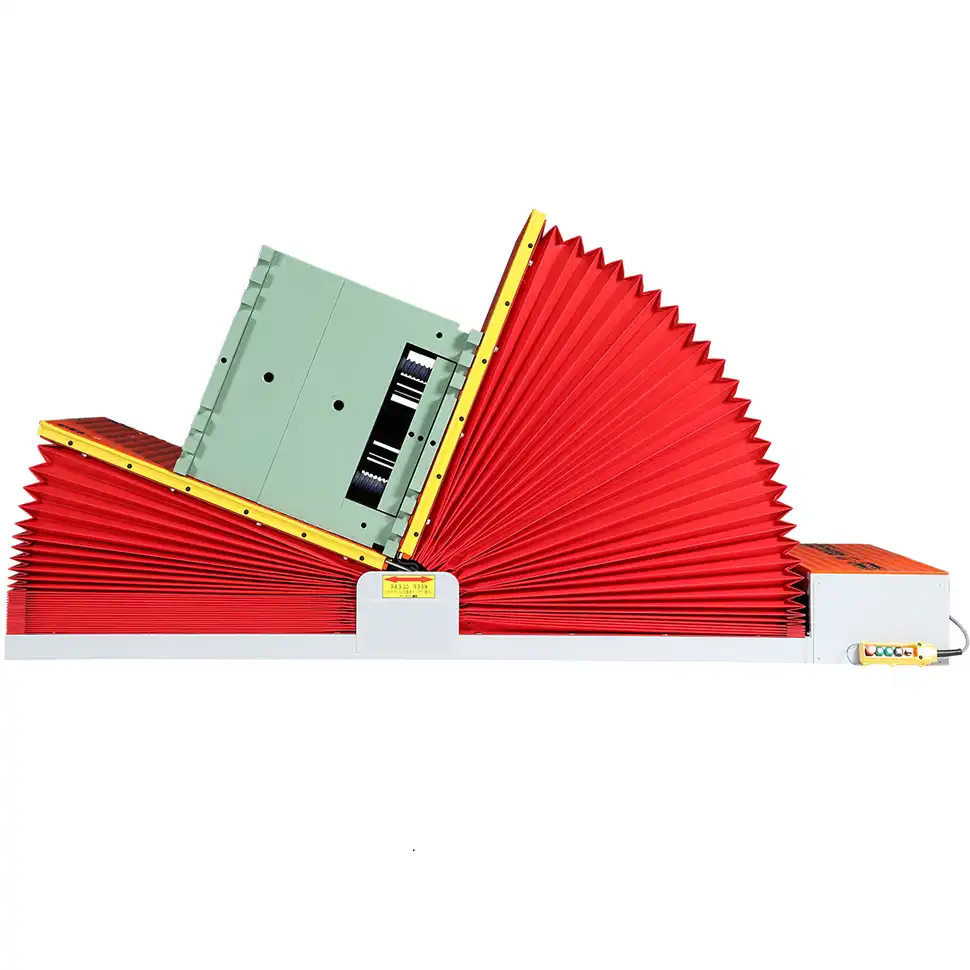Mold Flipper: How Do You Plan Floor Space and Foundations in Malaysia?
Investing in heavy machinery like a mold flipper is a big step for any facility in Malaysia. You've focused on the machine's specs, its capacity, and its price. But there's a hidden risk that can turn a smart investment into a costly mistake: the ground it sits on. An improperly planned floor space or a weak foundation can lead to operational bottlenecks, constant maintenance issues, and even catastrophic equipment failure. These problems don't just cost money to fix; they halt your production and threaten the safety of your team.
Planning floor space and foundations for a mold flipper in Malaysia is a detailed engineering process. It starts with calculating the machine's total operational footprint, which includes its dynamic movement and necessary clearance for loading and maintenance. The next critical step is a professional geotechnical survey to analyze the site's soil bearing capacity. Based on this data, a structural engineer must design a reinforced concrete foundation that supports the machine's specific static and dynamic loads and complies with all local Malaysian building codes and safety standards.

Getting the foundation right is the literal groundwork for your machine's long-term performance and reliability. It’s about more than just pouring concrete; it’s about creating a stable, safe, and efficient workstation that will serve you for decades. In my years as an engineer and now as a factory owner, I’ve seen firsthand how a little extra planning in this area pays off enormously. Let's break down the essential steps to ensure your mold flipper installation in Malaysia is a complete success from the ground up.
What are the first steps for assessing floor space requirements for a mold flipper?
You have the manufacturer's spec sheet with the machine's dimensions. It seems simple enough to just mark out a square on your factory floor. But this is a common oversight that leads to major problems. A mold flipper is a dynamic piece of equipment. It moves, it turns, and it requires other equipment like cranes or forklifts to service it. If you only plan for its static size, you will create a cramped, inefficient, and dangerous workspace that slows down your entire process.
To properly assess the floor space for a mold flipper, you must begin by studying the machine's detailed technical drawings to understand its full range of motion. You should then add a safety and access buffer of at least 1.5 to 2 meters around the entire operational envelope. Finally, you must map the logistical pathways for loading and unloading molds, ensuring there is sufficient clear space for cranes or forklifts to maneuver heavy items without obstruction.

Calculating the Dynamic Footprint
The first mistake people make is looking only at the base dimensions. A mold flipper, by its very nature, changes shape and size during its operation. When it tilts or rotates a heavy mold, its center of gravity shifts, and its physical reach extends far beyond its base. This is the "dynamic footprint" or "operational envelope." You must get this information from the manufacturer. It should be a clear drawing showing the machine at its maximum extension in all directions. Ignoring this means you might place it too close to a wall, a support column, or another piece of machinery. This could lead to a collision, damaging both the mold flipper and your facility. Always plan for the machine in motion, not just at rest.
Mapping Workflow and Logistics
A machine does not exist in isolation. It is part of a larger process. You need to think about how molds will get to the flipper and where they will go afterward. Will a forklift bring the mold? Or an overhead crane? You need to plot these paths. The aisles leading to the machine must be wide enough for safe passage. There needs to be a designated, safe area for a forklift to turn and place a heavy mold onto the flipper table. You also need a laydown area for molds waiting to be flipped and for molds that have just been processed. A poorly planned workflow creates traffic jams on the factory floor, wastes time, and increases the risk of accidents.
| Aspect | Poor Layout | Optimal Layout |
|---|---|---|
| Access Path | Narrow aisle, shared with pedestrian traffic. | Wide, dedicated path for machinery. Clear of foot traffic. |
| Loading Area | Just enough space for the forklift to approach. | Ample space for the forklift to approach, turn, and align. |
| Laydown Space | Molds are placed randomly in any available space. | Designated, marked laydown zones for incoming/outgoing molds. |
| Operator Position | Control panel is in a blind spot or cramped area. | Operator has a clear line of sight to the entire operation. |
Planning for Maintenance and Utilities
Your mold flipper will need maintenance. Technicians will need space to open control panels, access hydraulic pumps, and inspect mechanical parts. A common complaint I hear is that a machine was installed so close to a wall that a critical access panel cannot be fully opened. This turns a simple repair into a major, time-consuming task. Plan for at least 1.5 meters of clear space on all sides designated for maintenance access. Also, consider the utility lines. Where will the electrical conduit run? Where will the hydraulic lines connect? These need to be planned so they are protected from damage but are still accessible for service.
How do you determine the correct foundation specifications for a heavy mold flipper in Malaysia?
You see a thick concrete floor in your factory and assume it can handle anything. This is a dangerous assumption. A standard factory floor is designed for general loads, not the concentrated static weight and powerful dynamic forces of a heavy mold flipper. Placing such a machine on an inadequate foundation can cause the concrete to crack, the machine to become unlevel, and critical components to misalign. In a climate like Malaysia's, with specific soil types and high moisture levels, the risk of foundation failure is even greater if not properly engineered.
To determine the correct foundation specifications in Malaysia, you must first obtain the complete load data from the mold flipper manufacturer, including its static weight and all dynamic forces generated during operation. Next, you must engage a local Malaysian geotechnical engineer to conduct a soil investigation report (SIR). A qualified structural engineer will then use both of these documents to design a foundation, typically a steel-reinforced concrete slab or pit, that fully complies with Malaysian engineering standards like MS EN 1997-1.

Understanding Load Types: Static vs. Dynamic
It is critical to understand the two types of loads your foundation must handle.
- Static Load: This is the dead weight of the mold flipper itself, plus the maximum weight of the mold it is designed to handle. It is a constant, downward force. While significant, this is the easier part of the equation.
- Dynamic Load: This is the real challenge. When the machine rotates or tilts a multi-ton mold, it generates immense, shifting forces and vibrations. These forces are not just downward; they can be lateral and torsional. The foundation must be strong and rigid enough to absorb these vibrations without cracking or shifting. If it fails, the machine can lose its precise alignment, leading to premature wear on bearings, gears, and structural components. Your machine supplier must provide you with these dynamic load calculations. Without them, any foundation design is pure guesswork.
The Importance of a Geotechnical Survey in Malaysia
You cannot design a foundation without knowing what it's sitting on. This is where a geotechnical survey, or Soil Investigation Report (SIR), is non-negotiable, especially in Malaysia. The country has diverse soil conditions, from soft marine clay in coastal areas to firmer laterite soils inland. A geotechnical engineer will drill boreholes at the proposed machine location to determine several key factors:
- Soil Bearing Capacity: This is the maximum pressure the soil can withstand without failing.
- Soil Composition: Is it clay, silt, sand, or rock? This affects how it behaves under load.
- Water Table Level: A high water table, common in Malaysia's tropical climate, can weaken the soil and may require special waterproofing and drainage solutions for the foundation.
The results of this report will dictate the required depth, thickness, and type of foundation needed to safely support the machine.
Designing the Reinforced Concrete Foundation
With the machine's load data and the soil report, a structural engineer can now design the foundation. This is not a job for a general contractor; it requires specialized engineering knowledge. The design will specify:
- Dimensions: The length, width, and depth of the concrete pour. This might be a simple thick slab on grade, or it could be a deep, excavated pit foundation for very heavy machines.
- Concrete Strength: The required compressive strength of the concrete, usually specified in megapascals (MPa). A typical value might be 30-40 MPa.
- Steel Reinforcement: The size, spacing, and grade of the steel rebar cage inside the concrete. This reinforcement is what gives the foundation its tensile strength to resist the dynamic forces.
- Anchor Bolts: The design will include the precise placement of heavy-duty anchor bolts that will secure the machine to the foundation.
| Machine Weight (with Max Load) | Typical Soil Condition | Recommended Foundation |
|---|---|---|
| 5 - 10 Tons | Good (High Bearing Capacity) | 400-600mm Reinforced Slab |
| 10 - 25 Tons | Average (Medium Bearing Capacity) | 600-1000mm Reinforced Slab/Shallow Pit |
| 25 - 50+ Tons | Poor (Low Bearing Capacity) | 1000mm+ Deep Pit Foundation, possibly with Piles |
What safety and operational layouts should be considered around the mold flipper?
The machine is installed on a solid foundation. The workflow is planned. It seems like the job is complete. However, if you haven't integrated safety systems into the layout, you have created a serious hazard. A moving mold flipper is powerful and unforgiving. An accident involving such heavy machinery can be devastating, leading to severe injury and causing far more damage and cost than any equipment failure. A safe layout is not an option; it is a fundamental requirement for a productive and responsible operation.
The most important safety and operational layouts for a mold flipper include establishing clearly marked exclusion zones where personnel are forbidden during operation. This should be enforced with physical barriers or electronic safety devices like light curtains. Additionally, multiple, easily accessible emergency stop buttons must be installed, and the entire work cell must be illuminated with bright, shadow-free lighting to ensure maximum visibility.
Creating Exclusion Zones and Physical Barriers
The area within the machine's dynamic footprint must be a strict "no-go" zone for personnel during operation. This area should be clearly marked on the floor with high-visibility yellow and black striped paint. However, paint alone is not enough. The best practice is to install physical guarding. This can be a sturdy steel fence with interlocked gates. When a gate is opened, a safety switch sends a signal to the machine's control system, immediately stopping its movement. This prevents anyone from accidentally walking into the path of a moving load. For areas where forklifts need access, light curtains are an excellent solution. These devices project a beam of infrared light; if the beam is broken by a person or object, the machine instantly stops.
Integrating Safety Hardware and Controls
Modern safety is about more than just E-stops. A comprehensive safety system should be integrated directly into the machine's PLC (Programmable Logic Controller).
- Emergency Stops (E-stops): These are crucial. There should be one on the main control panel and several others positioned around the machine's perimeter so they can be activated from any angle in an emergency.
- Two-Hand Controls: For certain operations, requiring the operator to press two buttons simultaneously ensures their hands are away from any moving parts.
- Audible and Visual Alarms: A flashing beacon and a loud siren should activate just before and during the machine's movement. This alerts everyone in the vicinity that the machine is about to operate.
- Safety PLC: This is a dedicated controller that monitors all safety inputs (E-stops, light curtains, gate switches). It is designed to be fail-safe, meaning if any component fails, it will default to a safe (stopped) state. This level of integration is a key part of moving towards a smarter, safer factory, a goal I know leaders like Javier value highly.
Optimizing for Ergonomics and Visibility
A safe layout is also an ergonomic one. The operator's control station should be positioned where they have a complete, unobstructed view of the entire machine and the surrounding area. They should not have to peer around the machine or walk into a potentially unsafe area to see what is happening. The controls themselves should be intuitive and clearly labeled. The height of the control panel and the layout of the buttons should be designed to reduce operator fatigue and minimize the chance of errors. Good lighting is also a critical safety feature. The area should be brightly lit, eliminating shadows where hazards could hide. This small detail greatly improves operator awareness and reduces the risk of trips and falls around the machinery.
How do Malaysian regulations and site conditions impact foundation planning?
You might have a world-class engineering plan for your foundation, designed by top experts. But if that plan doesn't account for the specific legal and environmental realities of Malaysia, you could face serious roadblocks. You can't simply apply a generic design. Local authorities like the Department of Occupational Safety and Health (DOSH) have specific requirements. Furthermore, Malaysia's tropical climate, with its heavy rainfall and high humidity, presents unique physical challenges that must be addressed in the foundation design to ensure long-term stability.
In Malaysia, foundation planning is directly impacted by the safety regulations set by DOSH and the building permit requirements of the local council (Pihak Berkuasa Tempatan). From a practical standpoint, the country's high annual rainfall necessitates a robust drainage system around the foundation pit to prevent water pressure and soil erosion, which could undermine the foundation's integrity over time.

Navigating Malaysian Regulatory Compliance
Before you even break ground, you must engage with the Malaysian regulatory framework. The two main bodies you will deal with are:
- Department of Occupational Safety and Health (DOSH): Under the Factories and Machinery Act 1967, the installation of heavy machinery like a mold flipper requires approval from DOSH. They will review your layout plans, foundation designs, and safety systems to ensure they provide a safe working environment. They are particularly concerned with structural integrity, machine guarding, and safe operating procedures. Failure to get their approval can result in a "stop-work" order and significant fines.
- Local Council (Majlis or Pihak Berkuasa Tempatan, PBT): You will need to submit your foundation and building plans to the local municipal or district council to obtain a building permit. Their engineers will review the structural calculations to ensure they comply with Malaysian Standards (MS), such as MS EN 1992 (Design of concrete structures) and MS EN 1997 (Geotechnical design). This process ensures your foundation is built to a recognized local standard of safety and quality.
Adapting to Climate and Environmental Factors
Malaysia's climate is not just a footnote; it's a primary design consideration.
- Monsoon Rains: Malaysia experiences heavy monsoon seasons. A large excavation for a foundation pit can quickly turn into a swimming pool. Your plan must include dewatering pumps and a well-designed permanent drainage system around the finished foundation. This prevents water from accumulating, which can exert hydrostatic pressure on the foundation walls and saturate the surrounding soil, reducing its bearing capacity.
- High Humidity: The constantly high humidity can affect the curing process of concrete and potentially increase the risk of corrosion for the steel reinforcement if it's not properly covered. Your construction plan should account for these factors, perhaps by using specific concrete admixtures.
- Flash Floods: In some areas, flash flooding is a risk. The finished floor level and the top of the foundation should be designed to be above potential flood levels to protect the machine's sensitive electrical and hydraulic components.
| Malaysian Factor | Impact on Foundation Plan | Solution / Mitigation |
|---|---|---|
| DOSH Regulations | Requires safety review and approval of design. | Engage a safety consultant; integrate guarding and E-stops. |
| Local Council Permits | Requires compliance with Malaysian Standards (MS). | Hire a local structural engineer familiar with MS codes. |
| Heavy Rainfall | Risk of pit flooding and soil erosion. | Design robust perimeter drainage and use dewatering pumps. |
| High Humidity | Can affect concrete curing and cause corrosion. | Specify appropriate concrete mix and ensure proper rebar cover. |
My Insights
I remember a project from early in my career. We were installing a large upender, similar in principle to a mold flipper, for a steel coil processing line. To save a little bit on the budget, the client insisted on using a less experienced local contractor for the foundation work. They poured a slab that looked strong, but they didn't fully appreciate the dynamic forces we had specified. Six months later, we got a call. The machine was vibrating excessively. A hairline crack had appeared in the foundation. By the time we investigated, the crack had spread, and the machine was slightly out of level, causing uneven wear on its main bearing. The "savings" on the foundation work resulted in ten days of production downtime and a costly repair job that involved chipping out the old concrete and re-pouring the foundation correctly.
That experience taught me a lesson I have never forgotten: the foundation is not a place to cut corners. For a business owner like Javier, who scrutinizes every investment for its return and its impact on production stability, this is critical. You are fighting to reduce downtime and lower operating costs. A faulty foundation works directly against those goals. It introduces a permanent point of weakness into your operation, leading to unpredictable maintenance, reduced machine lifespan, and lower output.
This is why at SHJLPACK, our philosophy is "Total Solution for Wrapping Machine." We don't just sell you a piece of equipment and walk away. When we provide a mold flipper, we also provide the detailed foundation drawings, the dynamic load calculations, and all the technical support your local engineers need. We see ourselves as your strategic partner. We understand that our machine's success in your plant depends entirely on the quality of its installation. Your long-term success, your increased uptime, your improved profit margins—that is how we measure our own success. I built this company on the knowledge I gained working my way up from the factory floor, and I am dedicated to sharing that knowledge so you can avoid the costly mistakes I’ve seen others make. Investing properly in your foundation is investing in decades of reliable production.
Conclusion
Planning your mold flipper's floor space and foundation in Malaysia is a critical task. It demands careful engineering, adherence to local regulations, and a deep understanding of site-specific conditions.




